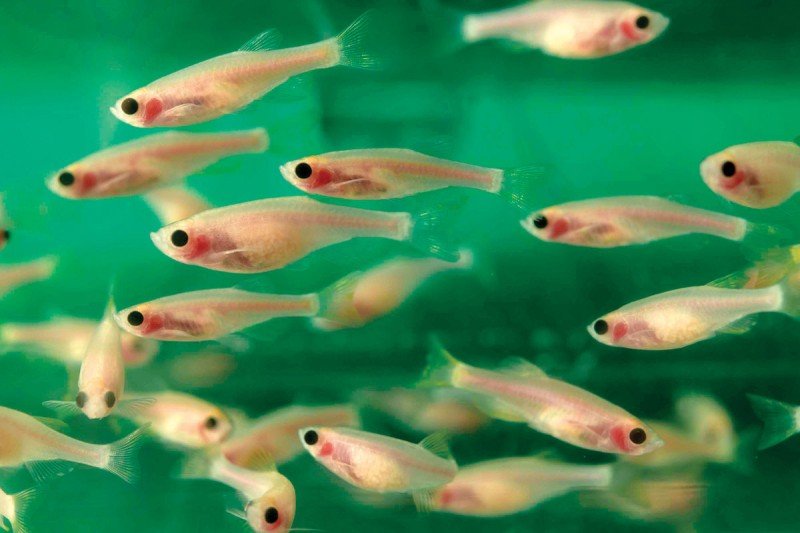
Five years ago, MSK physician-scientist Richard White learned about a woman with a rare form of skin cancer on her foot. Called acral melanoma, this type forms on the palms of the hand and soles of the feet and is typically very aggressive. It killed reggae singer Bob Marley.
As a melanoma researcher, Dr. White was intrigued by this patient’s case, particularly when genetic testing revealed that the woman’s tumor had an unusual genetic alteration.
“Melanomas that occur on the face, trunk, or back usually have DNA alterations in a gene called BRAF,” Dr. White says. “But this patient had an alteration in a gene called CRKL [pronounced ‘crackle’].”
Dr. White was curious about why the same type of cancer — melanoma — would be associated with different alterations in different parts of the body. Why do some DNA changes cause cancers to take root in the hands and feet, but not elsewhere? Why do most skin cancers never appear on the hands and feet? And what does location have to do with the ability of a genetic change to cause cancer?

SKI cancer biologist Richard White (right) with MD-PhD student Joshua Weiss
To get to the bottom of the mystery, he and an MD-PhD student in the lab, Joshua Weiss, decided to do some experiments using their favorite model organism: zebrafish.
Zebrafish are translucent, which means they are a great tool for studying cancer because you can actually see tumors forming beneath the scales. They are also easy to genetically engineer.
“We can take a cancer gene from a human and put it into a fish, and the fish will get cancer — allowing us to really understand how these genes work,” Dr. White explains.
For this study, Dr. Weiss engineered zebrafish to contain either extra CRKL genes or a mutant BRAF gene. Then, he monitored them for about a year. Along the way, he noticed something intriguing: Most of the fish with a BRAF mutation developed tumors on their body. Those with CRKL developed tumors on their fins. It was a mirror of what they saw with their patient — only instead of a foot it was a fin.
That initial observation was the start of a five-year-long research investigation that would eventually lead to a paper published in Nature. Somewhat surprisingly, it may also lead to an entirely new treatment approach.
“It’s very rare for a basic laboratory finding to have immediate therapeutic implications,” Dr. White says. “But this one does. Not only for this patient, but for other patients as well.”
Location, Location, Location
Like many of his SKI colleagues, Dr. White is interested in exploring the factors — beyond just genes — that influence whether cancer does or does not form in the body. In other words, he’s interested in the cancer ecosystem.
That interest comes in part from realizing that the same mutation that causes cancer in one tissue may leave another tissue completely unscathed. Take an ordinary skin mole. Typically, moles on the skin have a BRAF mutation, but most of the time they don’t turn cancerous.
In a paper published in the journal Science in September 2022, Dr. White and fellow SKI colleague Lorenz Studer discovered why that is. The ability of a BRAF mutation to cause melanoma, they found, depended on the developmental state of the cell containing it. The stem-like skin cells with a BRAF mutation readily turned cancerous. But the fully mature skin cells called melanocytes did not turn cancerous. Instead, they formed moles. To explain why not all mutated cells cause cancer, Drs. White and Studer coined the term “oncogenic competence.”
Now, in his most recent work on CRKL, Dr. White and his team say oncogenic competence of a cell is also determined by something else — its location in the body.
“Not only can a DNA mutation behave differently depending in the type of cell it finds itself in, but different parts of the body are susceptible to different mutations,” Dr. White says.

SKI developmental biologist Lorenz Studer is creating tools that could one day aid personalized medicine.
Treating the Location, Not the Cancer
The typical way of treating cancer is to target a mutated gene with a drug — for example, when a person with a BRAF mutation is prescribed the targeted drug vemurafenib.
But if the ability of genes to cause cancer also depends on location, then it might be possible to blunt cancer development by blocking location cues.
“It leads to the interesting idea that instead of treating the oncogene — or the tumor even — we can treat patients who have these tumors based on their anatomic location.”
To identify potential “location” drugs, Dr. White’s team is taking advantage of a technology developed with Dr. Studer for the previous study. Scientists take genes from a patient’s tumor, put them into human embryonic stem cells, and grow these stem cells into skin cells to create a custom-made model of the patient’s tumor in a dish.
With this model, the scientists can then test a battery of chemicals on the cells to see which might make good medicines. Once they find candidate drugs, they can go back to the fish and test them in a living animal to see if they are safe and effective.
That’s exactly what they are doing for the patient from five years ago. Using these innovative methods, they have found — and are now testing — a handful of drugs that may be effective at treating that woman’s CRKL tumor.
Your Own Ecosystem
The melanoma patient who sparked Dr. White’s research doesn’t have a need for these drugs right now. She is still doing well following surgery to remove her original tumor. But should the cancer relapse, these drugs will be there waiting for her.
Dr. White hopes that this approach to drug development will become a reality for more and more patients. It would mean the beginning of a new era of personalized medicine. No longer only available off-the-rack, drugs would be tailor-made and tested for you, depending on your personal ecosystem.
Supporters of Richard White’s research include the Melanoma Research Alliance, Pershing Square Sohn Cancer Research Alliance, and Mark Foundation for Cancer Research. Lorenz Studer’s research is supported by Aligning Science Across Parkinson’s (with The Michael J. Fox Foundation for Parkinson’s Research) and the JPB Foundation.


